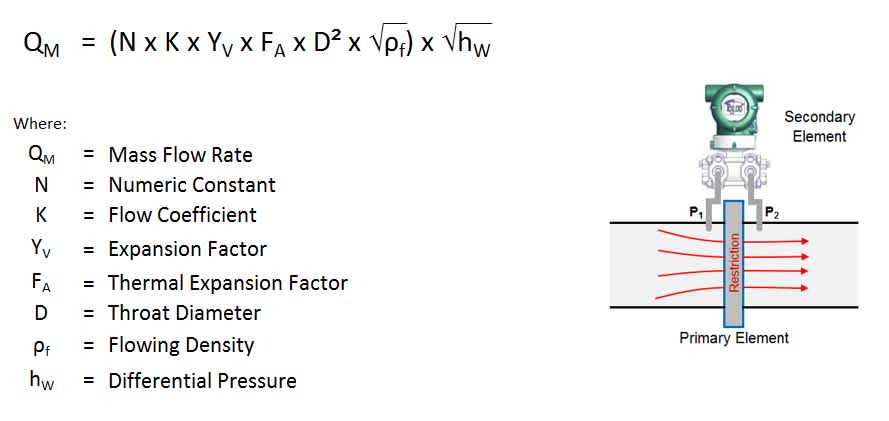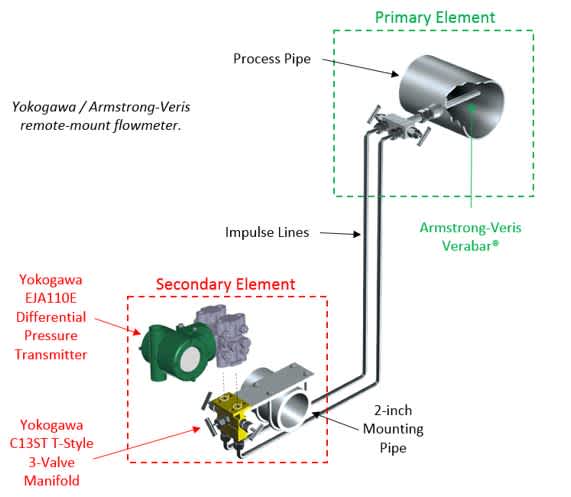What Is a Differential Pressure Flow Meter?
Differential pressure (DP) flow measurement is a well-known and common technology for measuring flow in a closed pipe.
How Does a Differential Pressure Flow Sensor Work?
DP flow solutions are made up of two elements to measure flow, a primary element, which introduces a pressure drop, and a secondary element (a DP flow transmitter) to measure the differential pressure flow. This technology uses Bernoulli’s equation to calculate the flow of the medium in the pipe.
Yokogawa offers a complete solution for measuring DP flow with a range of technologies, including averaging pitot tubes (VERIS Verabar®) and nozzle type flow meters (VERIS Accelabar®).
What Are the Benefits of DP Flow Measurement?
- Simple devices with no moving parts
- Less expensive compared to other flow technologies
- Installation can be in any orientation
- Can be used for most gases and liquids
- Maintenance is similar to that of pressure transmitters
-
Draft Pressure
Draft Pressure instruments are a unique type of differential transmitter that is designed to measure small differences in very low static pressure environments.
Details
Volumetric Flow Rate
Volumetric flow rate is the volume of fluid which passes per unit of time. Common units of measure include litres/sec (l/s) or cubic feet per second (ft3/s).
Differential pressure flow meter uses a variation of Bernoulli’s principle to infer the volumetric flow rate in a pipe. For our application of the principle, it states that the velocity of the flow increases and the pressure decreases as the flow moves through a restriction in the pipe; therefore, the pressure is higher before the restriction than after. Knowing this differential pressure, the flow rate can be determined. The square root of the differential pressure across the restriction in the pipe is proportional to flow.
Mass Flow Rate
Mass flow rate is the amount of mass of a substance which passes per unit of time. Common units of measure include Kg/s or lbs/min.
This type of measurement needs more detailed input than just differential pressure. It also needs temperature, static pressure of the line, the composition of the fluid, and more information of the primary element.
Differential Pressure Flow Meters consist of a Primary Element, a Secondary Element, and sometimes Tertiary Elements.
Primary Element: The Primary Element generates the differential pressure in the fluid. Primary Elements can include an averaging pitot tube, an integral flow orifice (IFO), or any number of DP producing devices.
Secondary Element: The Secondary Element is the pressure transmitter that is used to measure the DP. The secondary element may or may not include a flow computer with temperature and static pressure input.
Tertiary Element: The Tertiary Elements consist of flow computers, gas chromatographs, static pressure transmitters, or temperature transmitters.
Resources
One of the most common applications for differential pressure transmitters is flow measurement. DPharp differential pressure transmitters have some unique signal conditioning features to eliminate instability at low flow rates.
When selecting a Level Measurement device, what to consider in order to be accurate and repeatable?
Yokogawa's cost-effective and user-friendly, differential pressure volumetric flow measurement with accuracy ranging from 0.5% to 1.5%, ensures efficient process control at a competitive price compared to other flow technologies.
Downloads
Videos
Our experts review the theory behind flow measurement technologies. Discuss common flow application challenges and evaluate the different technologies when selecting a flow meter. They also give examples of best installation practices for successful measurements.
Looking for more information on our people, technology and solutions?
Contact Us






